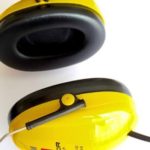In previous tutorial, you’ve prepared the inner bore of the flute, you glued it and tested it for leaks. Then, you made your first sound, hopefully :). Now, it’s time to perfect the voice of the flute, and prepare it for tuning.
This tutorial is focused mainly on fine craft – sanding, using diamond files and mastering the sound of your Native American flute. Let’s get to work.
Outer Sanding and Smoothing
If you do not care for nice bark on your flute, just use increasing grade of sanding paper to sand down the flute on the outside and make it smooth. Be careful not to sand down the nest area any more.
But if you wish for your flute to keep some level of bark, then using a knife is a better choice. You can either leave the entire bark untouched, or you can remove the outer layer of the bark by carefully cutting it off with a sharp knife, leaving the lower layer intact – this is how you can get a nice color of your branch flute.
Still, if you wish to leave the bark, you need to remove it from the area where you wish to place finger holes. So pick up the branch to your mouth, like you would play the flute, and notice where your fingers “feel good” – this is where you should remove the bark and sand the surface smooth. It’s because any irregularity around finger holes will have negative effect on the flute’s sound.
If you’re a woodmaker with tools and experience, and you wish to make the surface of the flute as smooth as possible, now is the time. After the flute is tuned, the only thing you should do is to polish it, but no more material should be removed. This could break the sound.
Shape the Mouthpiece
Now you can use a knife and/or sanding paper to shape the final mouthpiece. Play around with whatever you want, just remember that it should feel smooth and your mouth should have no problem covering the mouthpiece air hole without actually putting the flute inside your mouth. This will limit the watering out of your instrument. At the same time, limit the size of wood’s surface that has a direct contact with your mouth – this will protect the mouthpiece itself.

Few examples of Native American flute mouthpieces
Perfecting the Sound Mechanism of Native American flute
Now it’s time to make the flute sound as good as possible. To do so, we need to perfect the instrument’s sound mechanism. Your flute may be able to make a sound now. So it’s time to decide:
- If you feel all right with sound the flute makes, do nothing – sometimes, things work out just right the first time. Also, if the sound feels strong and clear, nothing should be done anymore.
- But if the sound sounds weak, or too airy, or the flute overblows easily, then adjustments to your sound mechanism may be necessary.
The sound of the Native American flute is affected by:
- The length and width of the True Sound Hole – too big, and the sound will get airy. Too small, and overblow will be too problematic.
- The depth of the air channel. If it’s too shallow, the back-pressure as you breath in is too great, and the flute may overblow easily, while being too weak at the same time. Too deep, and the flute will be airy.
- The block’s fit – any leaks between the block and the nest’s surface will weaken the sound and make the flute sound airy.
- Smoothness of everything – the air channel, the splitting edge etc, everything must be very smooth.
- The angle of the splitting edge – be sure to make it 45 degrees on the bottom. If you make the air channel inside the flute’s body, not in the block, then there should be also a chamfer cut on the top of the splittingg edge, going down.
Now, that the flute is glued and sanded, we can perfect the sound. Unfortunately, there is no easy way to fix things if something went wrong. That’s why I make this troubleshooting guide below. Sometimes, you just need to try things and see what works for you.
- Go through the tutorial that explains how to build a sound mechanism for your Native American Flute – just to recall the knowledge :).
Flute is Too Quiet
Check the fit of the Block to the Nest
The block must fit perfectly on the nest. Place the block on the nest, and look on it from a side, against light source to see if there is any leak between the block and the nest. If there is, sand it down and make sure the block fits. If the air escapes through leaks, this may cause the flute to be quiet or airy.
Check the Depth of the Air Channel
Place the block above the air channel and look how deep the air channel is. It should be anywhere between 0,5 and 0,8 mm. Usually, make a shallow air channel first, and enlarge it later. The more air gets onto the splitting edge, the less chance of overblow and the louder the flute becomes. But don’t over do it – too big air channel and the flute gets airy.
Check the width of the Air Channel
The bigger the diameter of the sound chamber, the bigger the true sound hole should be – thus the air channel width should be larger. Basically, flutes with sound chamber diameter less than 16 mm should have an air channel 6 mm wide, and bigger flutes should have an air channel about 8 mmwide.
Check the height of the splitting edge
The splitting edge should be placed right in front of the air channel – not too low, not too high. You can lower the splitting edge by sanding it down from above, and make it higher by sanding it down from below. This will also increase the TSH size, so be careful.
If the flute doesn’t sound right, try to sand down the splitting edge on the top and “lower it” this way.
The best thing to do is to take a peace of plastic card that will fit into the air channel, place it there and see if the splitting edge is placed right in front of the card/air channel.
Check the size of the True Sound Hole
The bigger the sound chamber, the bigger the True Sound Hole should be. If you have a big flute with small true sound hole, you need to enlarge the TSH. But if the flute is small, then big TSH will make it airy.
Check the Quality of Sound Chamber’s walls
They should be smooth enough, so make sure they are well sanded if necessary. This will improve the resonance of the sound chamber, making it sound stronger and louder.
Check the Sound Chamber’s Ratio
If the sound chamber is very long, it should be large in diameter. If the sound chamber is short, its diameter should be small. Keep this in mind, and check the table regarding flute’s dimmension in one of the previous tutorials:
The Flute Sounds Airy
Check the height of the splitting edge – it should be placed right in front of the air channel. Also, other reasons for airy sound are mentioned in this whole article :).
Check the Size of the TSH
If the TSH is too big for the flute (ratio), the flute may get airy. In such cases, you need to make it smaller, for example by gluing a piece of wood to its wall, right below the air channel, then sand everything smooth, leveling the air channel again.
You may also try using some fast drying glues to drop a drop on the splitting edge and pour some wood dust, then sand and shape everything again, over and over again, to make the TSH smaller.
Try adding Wings to the Block
Try making a block with wings on its size, to “shield” the sound hole from both sides. Another tutorial will explain block making in details.
Check the Quality of the Splitting Edge
The splitting edge should be well made, without any ugly distortions, waves, thicker than other parts etc.
Also, sharp splitting edge produce sharp sounds. If the splitting edge is blunt, it will produce more airy sound. I recall reading, probably on Flutopedia.com, that some traditional Native American flutes prefer this airy sound, and thus the splitting edge is made a bit blunt on purpose.
Other
No matter what, it’s impossible to get a clear sound
If your flute gets squeeky, the sound “breaks”, overblow occures all the time and you can’t achieve a clear sound, check the flute for leaks and breaks in the sound chamber. Even if they’re very little, and impossible to see, if they’re there, they will cause a lot of problems.
Try to look into the flute’s sound chamber while pointing a light source at the flute – this should make the breaks visible on the inside. If you find any, put a duct tape on them and test the flute – if everything works, you just need some wood glue and wood dust to fix the breaks.
The flute overblows easily
Try to move the block back, if it works then you need to enlarge the true sound hole. Also, try to increase the size of the blow hole, as sometimes it helps lower the pressure inside the air support chamber of your Native American flute.
***
Try all the above, read through previous tutorials and experiment – with patience, you can achieve a good sound in your Native American flute. I have three more suggestions here.
- Sometimes, perfect voice is impossible – if there are errors in the sound chamber, or the branch is too curved, there will be limitations as to the quality of the sound.
- The best thing to do is to listen to a professionally made Native American flute live – get to a store, or ask someone you know owns one, or just purchase one. YouTube videos and on-line music is often edited (mastered) and it doesn’t provide you with real sound of the flute. Hearing what a nicely made flute sounds like helps you set a goal in your own craft.
- The final sound of the flute will be achieved after all finger holes are tuned and the flute is oiled.
Tuning Native American Flute
Now that the sound of the flute is perfected, you can begin the tuning process. I already published an entire series of tutorials that will guide you through the process of flute tuning:
- How to Tune Native American Flute – part 1
- How to Tune Native American Flute – part 2
- How to Tune Native American Flute – part 3
Follow these three tutorials, create finger holes and tune them. After this, your flute will be able to play melodies.
After that, the next tutorial in this series will cover the final touches on your flute.
Don't forget to become a fan on Facebook and subscribe to new posts via RSS or via email.










 via EMAIL
via EMAIL